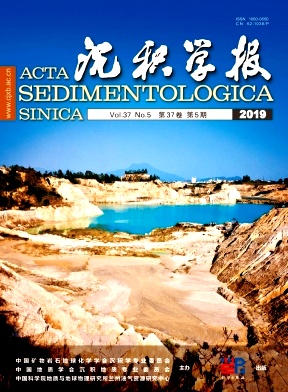Controlling Factors and Evaluation of the Medium-deep Glutenite Reservoirs: An example from the lower part of the fourth member of the Paleogene Shahejie Formation in the Yong1 block,Dongying Sag
doi: 10.14027/j.issn.1000-0550.2019.047
- Received Date: 2019-04-01
- Rev Recd Date: 2019-04-26
- Publish Date: 2019-10-10
-
Key words:
- reservoir characteristics /
- reservoir classification /
- reservoir evaluation /
- glutenite /
- lower section of the 4th member of Shahejie Formation /
- Shahejie Formation /
- Dongying Sag
Abstract: Uncertainty as to the controlling factors and classification methods for the medium-to-deep glutenite reservoirs in the lower member of Shahejie Formation in the Yong1 block,Dongying Sag,has been a bottleneck for oil and petroleum exploration efforts. To determine the characteristics,controlling factors and methods of classifying and evaluating glutenite reservoirs,the reservoirs were examined by a variety of techniques,including 3D seismic interpretation,core and thin section observation,reservoir property analysis and oil testing. A combination of lithofacies, diagenetic facies and fractures controlled the reservoir formation. Of these,lithofacies is the primary factor. The most favorable are sandstone and pebbly sandstone. Conglomerate and gravelly sandstone are less favorable,and the least useful are siltstone,muddy sandstone and calcareous sandstone. Diagenetic facies enhance the heterogeneity of reservoirs. The most favorable of these is mainly controlled by moderate to strong dissolution;those that are mainly controlled by compaction are moderately favorable;and the least favorable diagenetic facies are mainly controlled by cementation and high matrix content. In the highest structural part of the structure,fractures improve reservoir properties,tending to have better properties closer to the structural line. Based on reservoir characteristics and combinations of all the controlling factors,glutenite reservoirs are divided into four types and six subtypes. Type Ⅰ (combination of favorable lithofacies,diagenesis and tectonic location)reservoirs possess the best properties and have the highest oil output;these are classified as high-quality reservoirs. Type Ⅱ1 (combination of favorable lithofacies,diagenesis and adverse tectonic location) or Ⅱ3 (combination of favorable diagenesis,tectonic location and adverse lithofacies)reservoirs have medium properties and medium oil output,which of moderate quality. Type Ⅲ2 (combination of adverse diagenesis,lithofacies and favorable tectonic location)or Ⅲ3 (combination of adverse diagenesis,tectonic location and favorable lithofacies)reservoirs have quite poor properties and low output of low-quality oil. Finally, Type Ⅳ (combination of adverse lithofacies,diagenesis and tectonic location)reservoirs have the poorest properties and lowest output, and are classified as ineffective reservoirs.
| Citation: | WANG ShuPing, WANG ZhuKun, CAO YingChang, WANG YanZhong, DU LiangHui, LI YuZhi. Controlling Factors and Evaluation of the Medium-deep Glutenite Reservoirs: An example from the lower part of the fourth member of the Paleogene Shahejie Formation in the Yong1 block,Dongying Sag[J]. Acta Sedimentologica Sinica, 2019, 37(5): 1069-1078. doi: 10.14027/j.issn.1000-0550.2019.047 |






 DownLoad:
DownLoad: